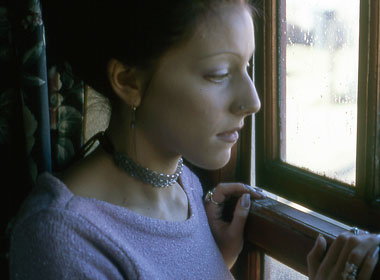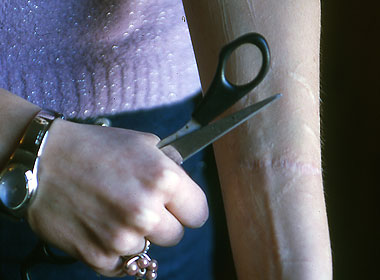Looks that Kill - OVERVIEW
By the late 1990’s the advent of multi-channel TV in the UK was beginning to have a big impact on the traditional channels. For ITV fragmenting audiences meant a reduction in audience share and advertising revenues. For the BBC it meant increasing pressure to be competitive to justify its licence fee. In this market-led environment populist programming was now demanded.
For filmmakers from the tradition of documentary as ‘the creative interpretation of reality’ the landscape was shrinking dramatically. Even Channel Four, which had been a stronghold for independent film and documentary makers since its inception in 1982, was radically changing its programming to fit its ‘rebranding’ as a populist youth channel.
Attempting to adjust to these new realities I was developing documentary ideas with Films Of Record, the company of the eminent documentary producer Roger Graef, an old friend and colleague whose researcher I’d been on his seminal fly-on-the-wall 1970’s BBC TV series ‘The Space Between Words' (made with ace cameraman/filmmaker Charles Stewart).
One of my ideas stood out for him - Looks That Kill, a proposal for a first-ever documentary about a little known mental condition Body Dysmorphic Disorder (BDD).
Characterised by an obsession with one’s apparent physical hideousness, I knew from personal experience in my late teens/early twenties how devastating BDD could be. Yet I’d only come to learn very recently, over 25 years after the event, that I’d actually suffered from a definable disorder, and indeed that it was now treatable.
The revelation had been an Independent On Sunday article in 1995 by mother Chris Saville whose son had killed himself because of his condition. In 1996 another article had pointed me to the first book about BDD The Broken Mirror just published by American body-image specialist Dr Katharine Phillips.
For many years before I knew of BDD as a mental disorder I had wanted to do something that could convey the nature of what had been a searing, life-turning experience. Now at last I had a ‘hook’. And a subject that combined two market obsessions - youth and looks.
After a long wait - somebody who thinks they are grotesque is unlikely to find the prospect of being on camera in front of millions enticing Ė I was lucky enough to encounter 21-year old Gail Bettinson. Gail proved a captivating find and, helped by Rogerís standing with commissioners, the film was commissioned for BBC1ís Inside Story series. It was my first full commission as a director. Events moved quickly and 4 months later the completed 50-minute documentary, in which I, as a former BDD sufferer, also appeared with Gail, was aired on BBC1.
In making films about real people a filmmaker, whether with the blank page or the camera, creates a space which can be of therapeutic value to his/her film's subjects. Looks That Kill was a particularly gratifying example of this. (see References)

